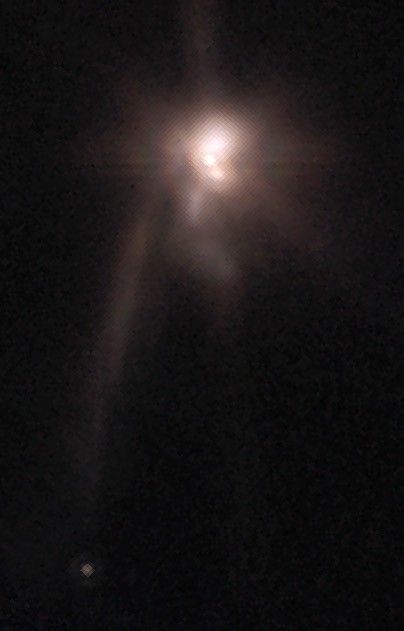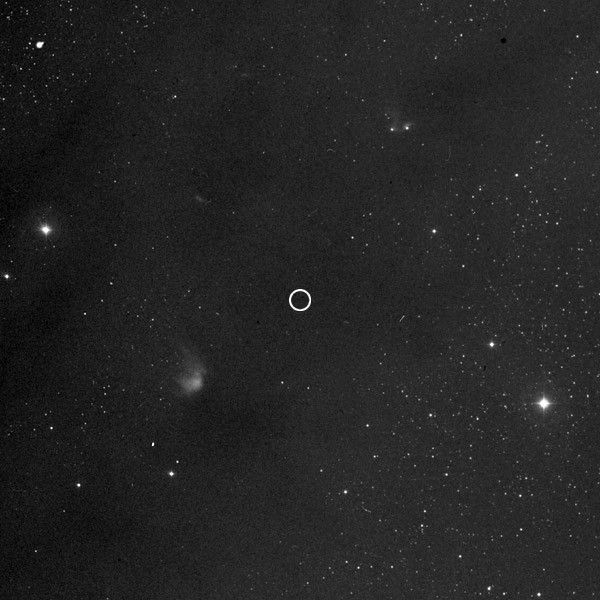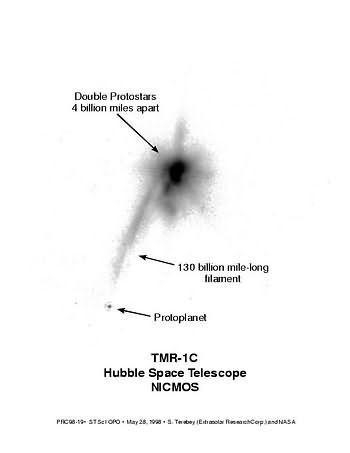1 min read
Follow-Up Observations Show Potential Planet TMR-1C is Really a Star

This NASA Hubble Telescope near-infrared image of newborn binary stars (image center) reveals a long thin nebula pointing toward a faint companion object (bottom left) which could be the first extrasolar planet to be imaged directly.
The brightest objects in the image are the binary protostars, which illuminate an extended cloud of gas and dust (image center) from which the stars formed. So much dust surrounds these protostars that they are virtually invisible at optical wavelengths. However, near-infrared light penetrates the overlying dust, revealing the newborn stars within. The faint multicolor cross extending from the neighborhood of the binary is an artifact produced when HST observes bright stars.
At lower left there is a point of light many times fainter than the binary. Theoretical calculations indicate that this companion is much too dim to be an ordinary star; instead, a hot young protoplanet several times the mass of Jupiter is consistent with the observed brightness. The candidate protoplanet appears at a distance of 130 billion miles from the binary (1400 times the Earth's distance from the Sun). A bright streak of nebulosity extends from the binary toward the faint companion, possibly indicating that the protoplanet was ejected from the binary system.
Current models predict that very young giant planets are still warm from gravitational contraction and formation processes, with temperatures as high as a few thousand degrees Fahrenheit. This makes them relatively bright in infrared light compared to old giant planets such as Jupiter. Even so, young planets are difficult to find in new solar systems because the glare of the central star drowns out their feeble glow. Young planets ejected from binary systems would therefore represent a unique opportunity to study extrasolar planets with current astronomical technology.
About the Object
- R.A. PositionR.A. PositionRight ascension – analogous to longitude – is one component of an object's position.04h 39m 14.2s
- Dec. PositionDec. PositionDeclination – analogous to latitude – is one component of an object's position.25° 53' 11.9"
About the Data
- Data DescriptionData DescriptionProposal: A description of the observations, their scientific justification, and the links to the data available in the science archive.
Science Team: The astronomers who planned the observations and analyzed the data. "PI" refers to the Principal Investigator.The members of the research team include Susan Terebey (Extrasolar Research Corp.), Dave Van Buren, Deborah L. Padgett, Jet Propulsion Lab (JPL), Pasadena, CA, Terry Hancock (Extrasolar Research Corp.), and Michael Brundage, JPL. - InstrumentInstrumentThe science instrument used to produce the data.HST>NICMOS
- Exposure DatesExposure DatesThe date(s) that the telescope made its observations and the total exposure time.August 4, 1997
- FiltersFiltersThe camera filters that were used in the science observations.The image was taken in three wavelengths: 1.6, 1.9, and 2.05 microns.
- Object NameObject NameA name or catalog number that astronomers use to identify an astronomical object.TMR-1C
- Release DateMay 28, 1998
- Science ReleaseHubble Takes First Image of a Possible Planet around Another Star and Finds a Runaway World
- CreditS. Terebey (Extrasolar Research Corp.) and NASA
Related Images & Videos
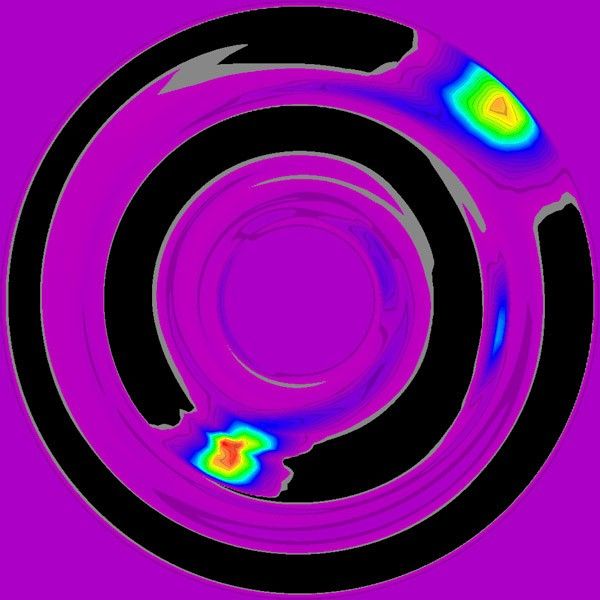
Simulated image of planetary formation
False color image of two gas giant protoplanets that have formed quickly in a disk of gas and dust. Each of the two protoplanets (yellow-red blobs) contains several Jupiter-masses of gas and dust. They orbit at distances of about 5 and 10 times the Earth's distance from the Sun...
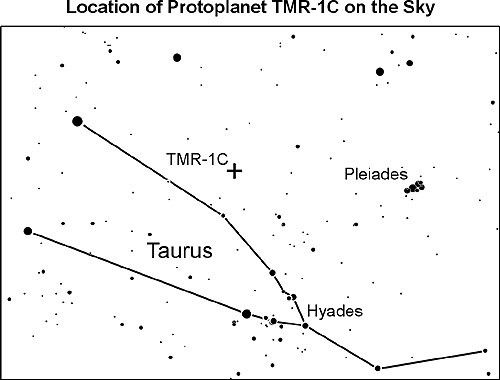
Zoom-In/Visualization of TMR-1C Planet
Zooming into the Taurus star-forming cloud, as seen in visible light, the young binary and planet are revealed as the wavelength shifts to the near infrared. A simulated 3D flyby indicates a possible interpretation of the layout of this region and its possible young planet.
Share
Details
Claire Andreoli
NASA’s Goddard Space Flight Center
Greenbelt, Maryland
claire.andreoli@nasa.gov



























